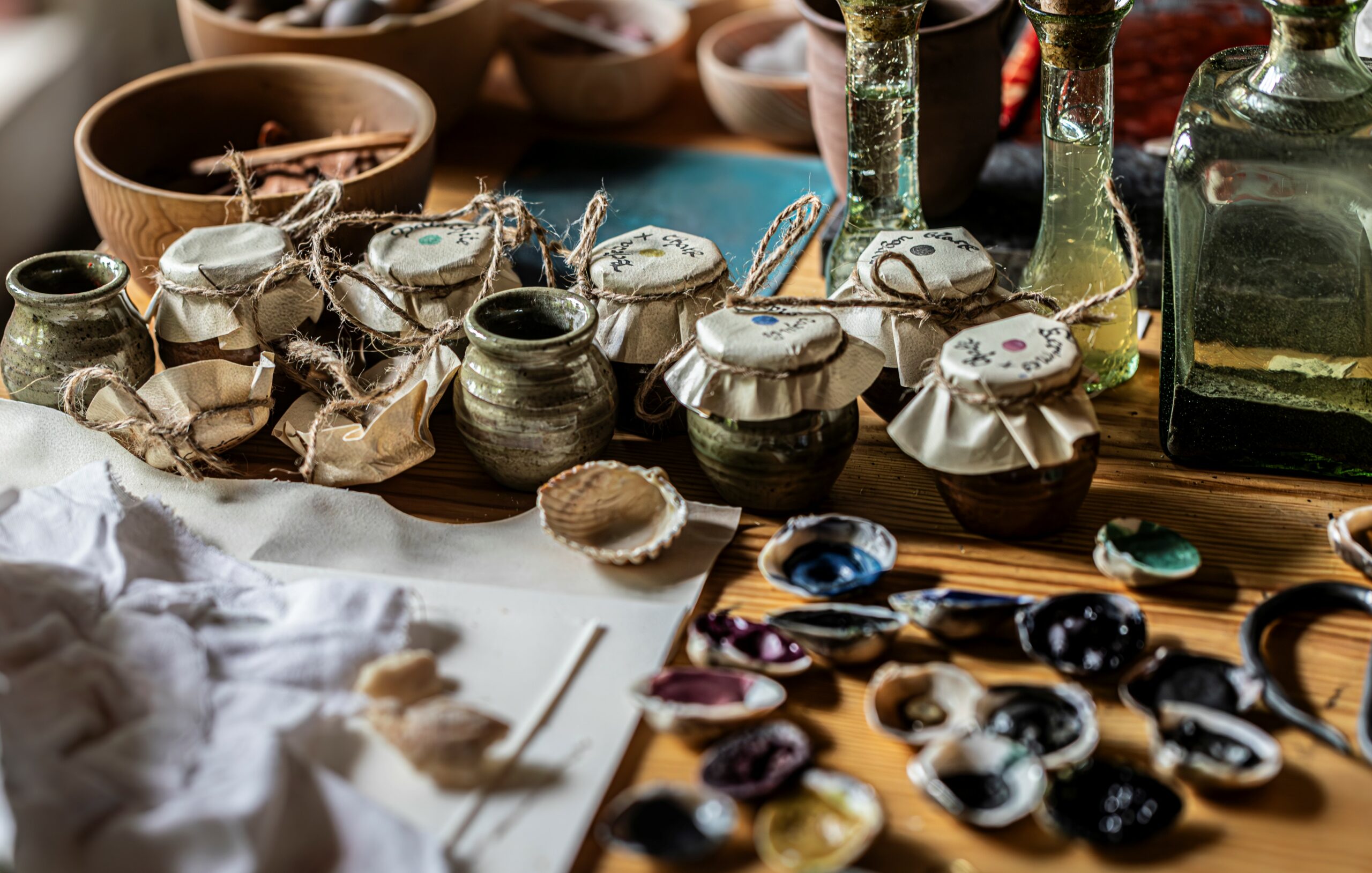
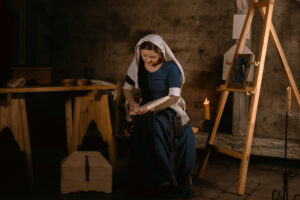
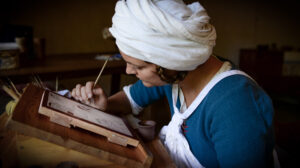
Technique
The painting techniques are based on the observance of historical procedures described in medieval recipes, the most famous representative of them is the work of the Italian artist Cennino Cennnini. The basis is the use of original materials and techniques of gradual layering of colors, thanks to which historical authenticity can be achieved. The calligraphic style is based on the study of historical sources and adheres to the rules of paleography and diplomatic.
Parchment
Parchment refers to the tanned sheep or goat skins on which most important medieval documents were written. Likewise for their replicas, Markéta uses handmade parchment imported from an Italian family’s workshop.


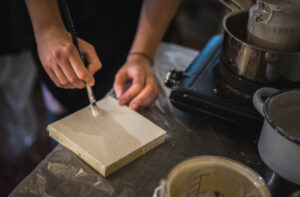
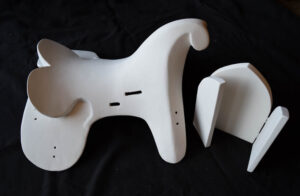

Gesso
Gesso is an integral part of panel painting, as well as other replicas ‒ shields and chests. It is a chalk primer applied to wood, which serves as a base for painting and gilding.
Gold/Silver
For the application of gold and silver, it is necessary to prepare the base, which most often contains a special Armenian bole pigment mixed with other binders. After polishing the bole with an agate stone, it is possible to proceed to silvering or gilding using thin leaves of these metals. Gold and silver surfaces can finally be decorated using stamps.
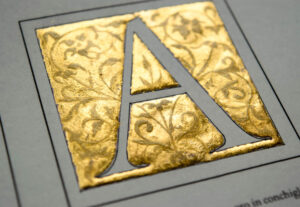




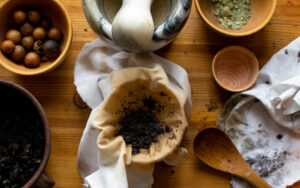

Iron-gall ink
One of the secrets of the medieval scribes is in the ink made from gallnut, which does not melt on parchment and is water-resistant. The ideal application is done with a sharpened goose quill.
Pigments
Natural pigments made from colored clays, minerals and plants are the basis for the production of colors intended for medieval painting. They are mixed with egg yolk or other water base medium depending on the type of subsequent painting.

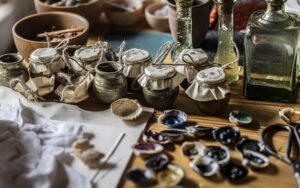
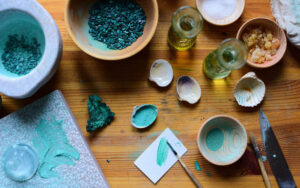
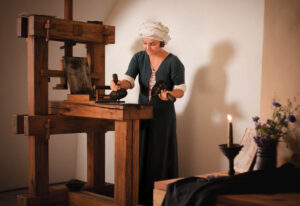

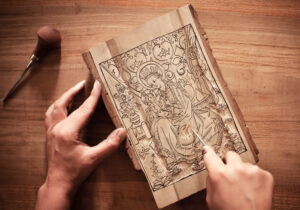
Printing press
The historical graphics are hand-carved using burils and knives, then printed on handmade paper on a reconstruction of a 15th-century printing press.


